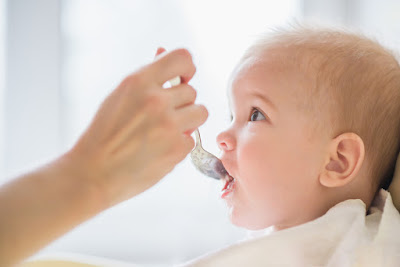First impressions are everything, which is why it’s so
important to put your best face forward. The latest research
shows it’s not just what you put on your skin that matters—it’s what you put in it. Eating habits can either
make or break your complexion, which is why you should be more cognizant about
your diet. Here are my top recommendations for foods to consume more of and
foods to avoid entirely.
Eat more:
1. Fish
Want to keep wrinkles and redness at bay? Then it’s time to make fish a staple in your
diet.
Due to being rich in omega-3 fatty acids, fish is powerful
ally when it comes to reducing inflammation and promoting hydration. Dr. Leslie
Baumann, certified board dermatologist and founder of Baumann Cosmetic
& Research Institute, recommends consuming wild fish as opposed to
farm-raised fish whenever possible, since it is higher in omega-3s.
2. Berries
Most of you will be delighted to see that berries made the
list. Not only are they sweet and nutritious, they’re also highly nutritious.
Berries are loaded with antioxidants, which are known for combating free
radicals. Several studies have linked free radicals to accelerated aging.
3. Green Tea
While we’re on the topic of antioxidants, green tea is a
potent source of polyphenols, an antioxidant with powerful anti-inflammatory
properties.
"Of all the antioxidants known to mankind, the
components of green tea are the most potent," says Dr.
Hasan Mukhtar, a professor and director of research in the dermatology
department at Case Western Reserve University in Cleveland. "Antioxidants
are those agents which can counteract the effects of oxidant radicals."
Steer clear of:
1. Dairy
I know, hard to believe, considering most of us grew up with
the ever-so-popular “Got milk?” commercials. But it turns out, that was just
clever marketing.
New evidence has emerged that shows a link between dairy and
several inflammatory skin conditions, including acne,
rosacea, and psoriasis. Researchers are still unsure as to whether it’s due
to the naturally occurring sugars that are present within dairy or the hormones
that go along with it. Either way, this is one food group you want to avoid.
2. Refined Sugar and
Processed Carbs
Even if you can eat donuts, bagels, cookies, and French
fries without putting on a pound of weight, you’re still damaging your skin at
the cellular level. That’s because refined
sugar and processed carbs cause an immediate spike in insulin. When that
happens, it sends your body into overdrive, which translate to inflammation,
irritation, and a loss of skin elasticity. What your body needs is a slow,
steady release of energy. Ditch the sweet treats and white bread and instead
opt for whole grains and fresh fruit.
3. Alcohol
While there’s research to suggest that a glass of wine a day
is healthy, at the end of the day it’s still poison.
Your body treats it as a toxin and as such, actively has to work to get rid of
it. Some people can see the effect this has on the skin immediately, in a
reaction known as flush. But even if you don’t see the effects right away, you
will years down the line.
One word of note: I realize that there are situations in
life that make it next to impossible to avoid one or two of the bad food groups
listed. My suggestion is to make exceptions only on special occasions (a new
job, a birthday, a family get-together). In the effort to stay healthy, don’t
neglect your mental health by trying to adhere to too strict of a diet.
Good luck on your vibrant skin journey!






